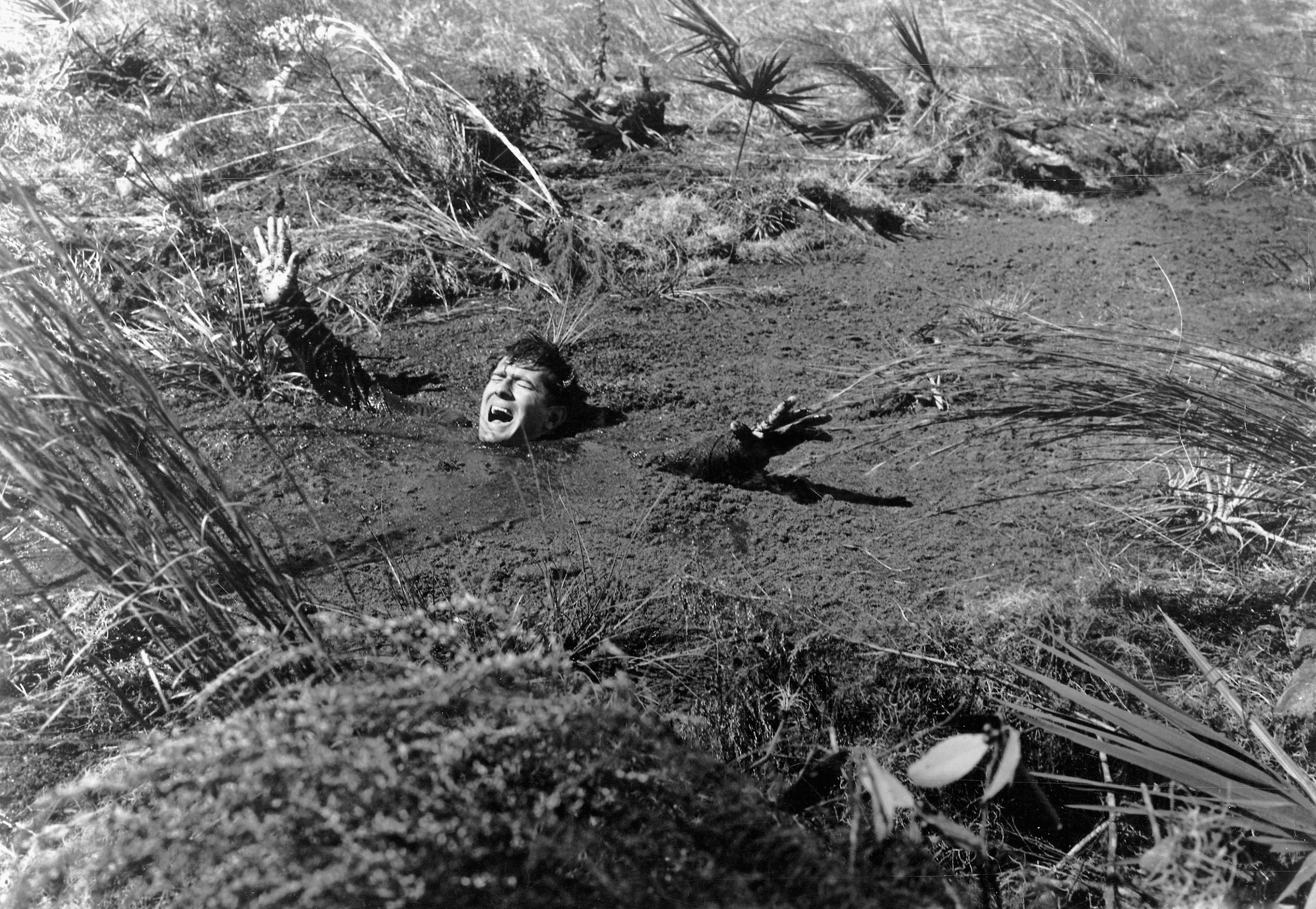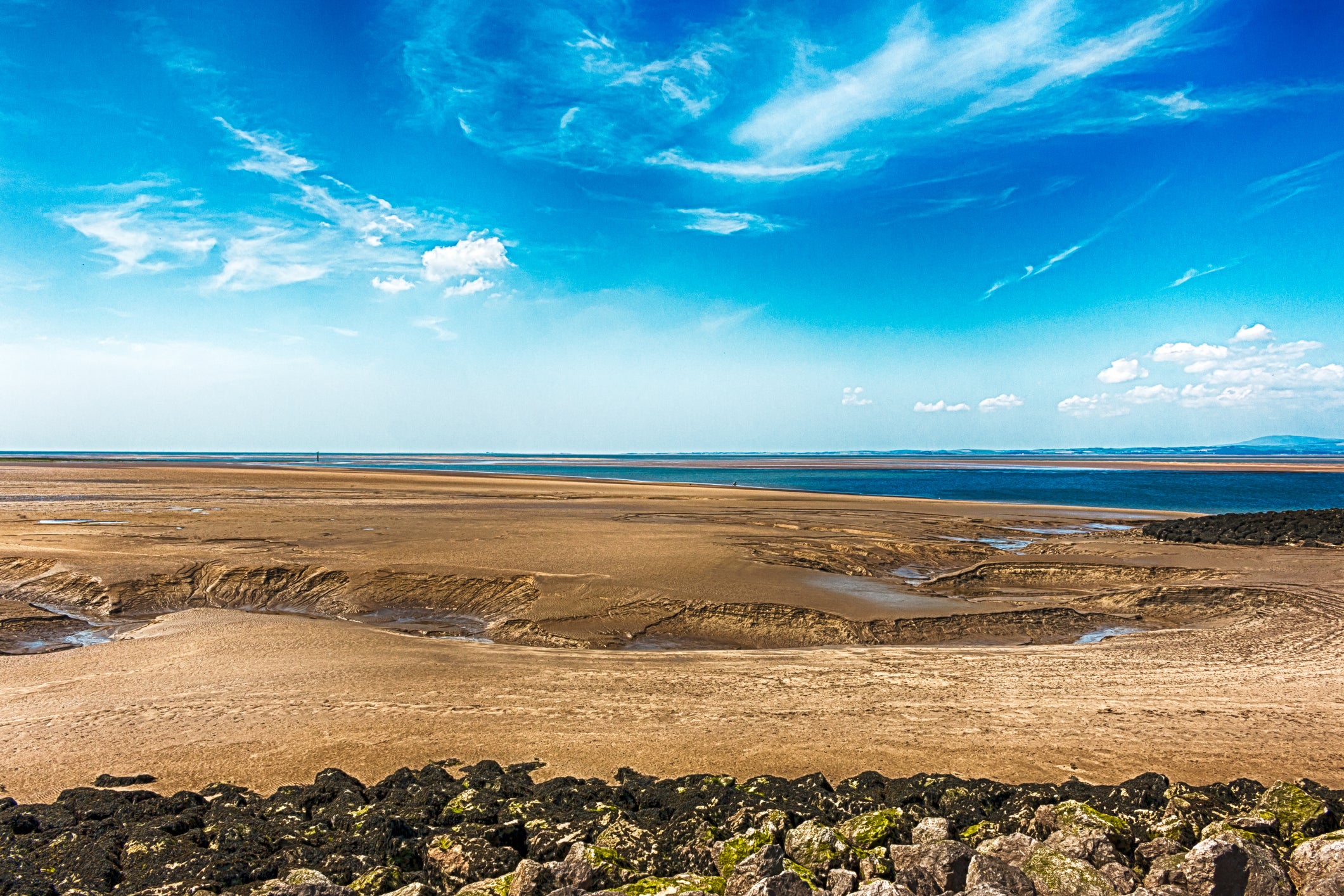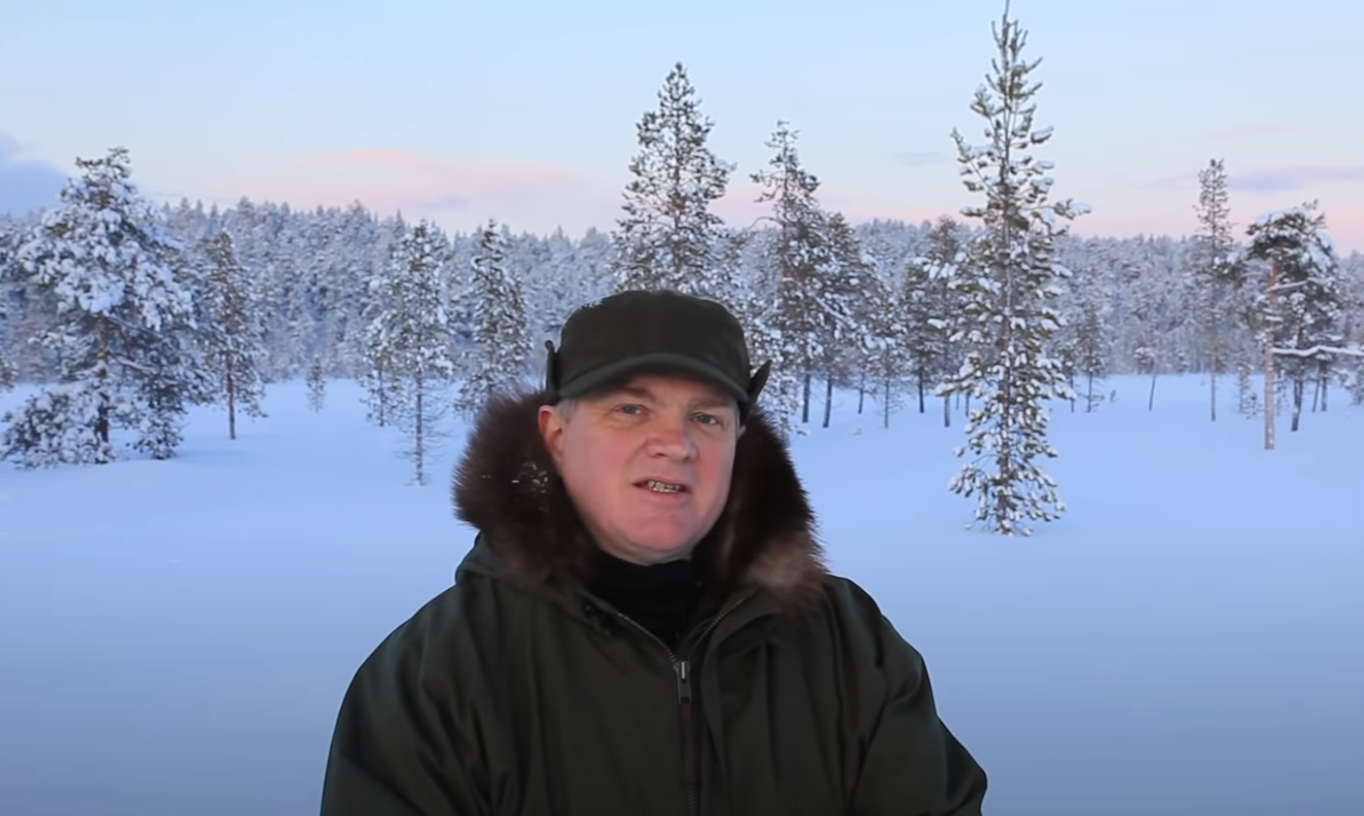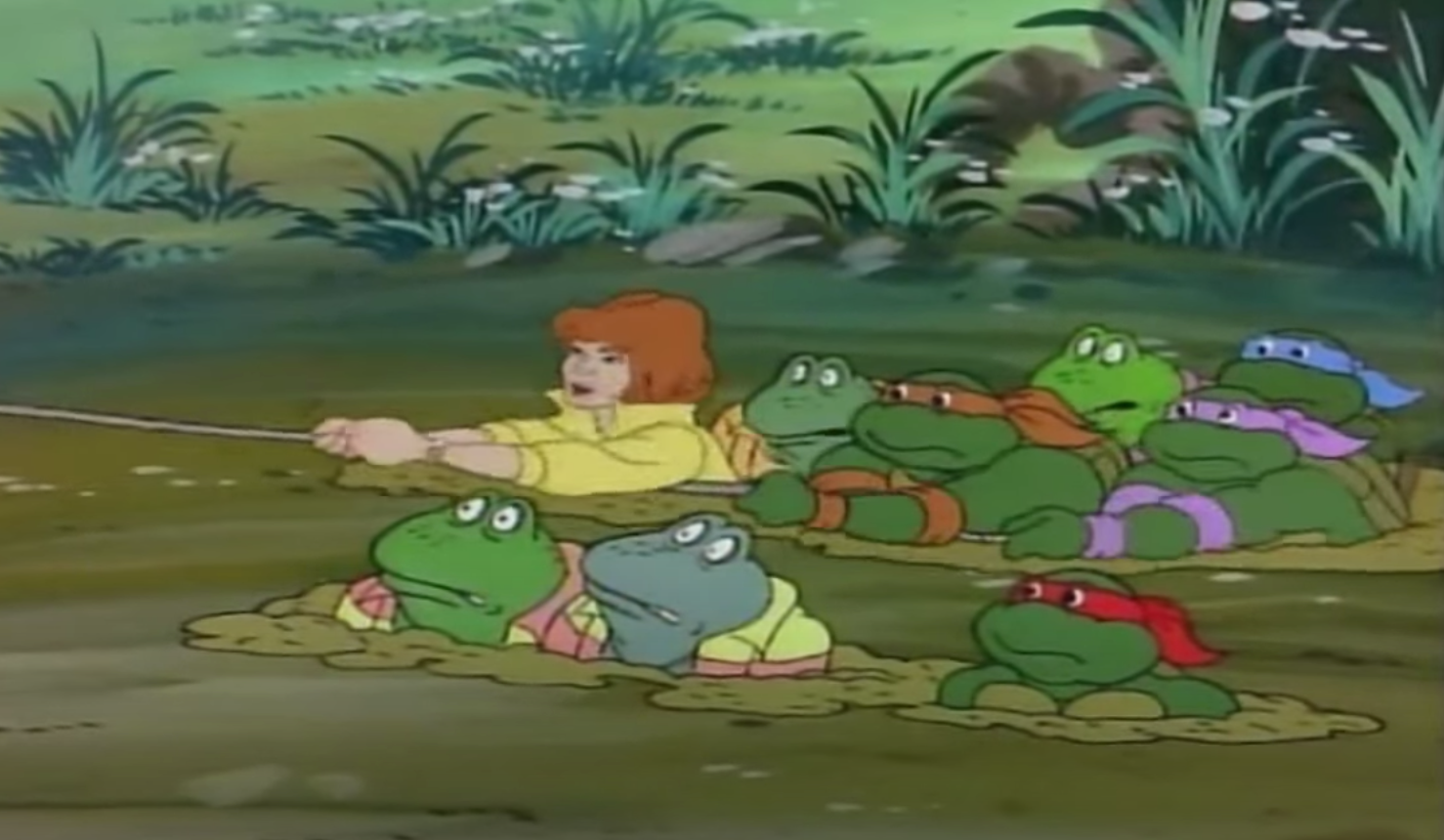‘David are you stuck? Do you need help?’ The terror of quicksand
If you’re of a certain generation you’ll have grown up with an irrational fear of encountering quicksand. But why? And what is it anyway? David Barnett treads carefully into this odd cultural phenomenon


The general consensus seems to be that it’s all Tarzan’s fault. The old TV shows that were a staple of summer holiday scheduling in the Seventies and Eighties – be they the episodes from the 1960s version starring Ron Ely or the black and white movies from the 1930s with Johnny Weissmuller in the ape-man role – invariably featured, among the many jungle perils, an encounter with quicksand.
Quicksand – also known as sinking sand – was a very real concern for my generation. Even growing up in Wigan in Lancashire, I had an inordinate fear of stepping into quicksand and being sucked down who knew how far? Deep enough to get horribly killed, at the very least. Possibly even to the centre of the earth.
It wasn’t just Tarzan. A huge number of TV shows and movies from the Sixties to the Eighties featured quicksand as a hazard and plot device. Any time there was a bit of quick peril required, quicksand was the go-to solution, in shows ranging from Batman to the Dukes of Hazzard, the Incredible Hulk to the Lone Ranger. Quicksand even featured in Black Beauty, Little House on the Prairie, and I Love Lucy.
Pondering quicksand for no real reason a couple of weeks ago, I put out on a whim a Tweet wondering if anybody else grew up with a very real concern about it, or if it was just me (which was quite likely; I also had a fear of spontaneously combusting and getting lost in the Bermuda Triangle).
In the 1960s, one in every 35 films featured a quicksand scene. Every other episode of Ron Ely’s ‘Tarzan’ series seemed to show a quicksand predicament
But it wasn’t just me. There were more than 1,400 replies from people who had also been mortally afeared of quicksand, and some of them had stories to show this wasn’t just an unreasonable terror – yes, there were a lot of “wellies stuck in mud” tales, but also people who had gone up to their knees and even beyond in patches of wet sand.
Stephen Brotherstone, along with Dave Lawrence, is the co-author of two volumes of Scarred For Life, books which take an exhaustive look at the darker side of pop culture from the Seventies and Eighties especially, and he confirmed to me that quicksand was definitely a thing… and you didn’t necessarily have to have grown up in the jungle, Wild West or coastal mudflats for it to be a worry.
“Born and raised as I was in the quiet South Liverpudlian suburb of Mossley Hill, the chances of my eight-year-old self succumbing to the sucking, claggy, brown filthiness of quicksand was somewhat remote,” accepts Brotherstone. “And yet, my mates and I would regularly play at ‘quicksand’ in Dovedale school playground: one of us would lay on their belly, thrashing their arms around as they pretended to sink to their mucky demise, while the rest of us strained our arms holding out imaginary tree branches for them to cling on to.”

It’s fairly obvious where our thrill at the thought of quicksand came from, even for me in Wigan and Brotherstone in Liverpool. “We were bombarded with the stuff,” he says. “In the 1960s, one in every 35 films featured a quicksand scene. Every other episode of Ron Ely’s Tarzan series seemed to show a quicksand predicament. Hell, Parker Brothers even released a Quicksand board game in 1989, and if that doesn’t put the top hat on the whole affair then nothing will.
“Quicksand, then, was a transient fear, one very much Of Its Time. Kids these days are probably more terrified of only getting single figure ‘likes’ on their Instagram posts.”
All right, grandad. Yes, we all played at quicksand, but some of the messages I received after my Twitter inquiry proved that it’s all fun and games until someone loses a welly with frog eyes on.
There was this terrifying patch of quicksand near the old Churchill Hospital in Headington, Oxford. It appeared to sort of ‘heave’ and it swallowed sticks as though it was starving. I was terrified but kept going back to it
Take this from @FroggieJess: “I was with my mother and younger brother. We took a long walk along the beach near our campsite to Holy Island and were sinking to our knees. We joked a lot about quicksand but tbh we were more worried the tide would come in too quickly and cut us off. We got to Holy Island and it was covered with signs warning not to go on the beach because of quicksand and 'unexploded ordnances'. We also found out an entire army was apparently swallowed by the quicksand while trying to attack the island.”
Or from @KDonnelly79: “There was this terrifying patch of quicksand near the old Churchill Hospital in Headington, Oxford. It appeared to sort of ‘heave’ & it swallowed sticks as though it was starving. I was terrified but kept going back to it.”
And this from @HamprtonRDS: “My friends and I visited the Silent Pool in Surrey. Below the actual lake that gives Silent Pool its name is an overflow lake for the winter months when water is plentiful from the hills nearby. Unknown to us, this in summer drains leaving what appears to be a solid floor. While exploring some of us foolhardily walked out into the ‘dry’ bed, only to disappear up to our hips in thick mud that had a definite resemblance to quicksand. After humour turned to panic our other friends formed a human chain to pull two of us out.”

Many other messages related incidents of getting stuck in slurpy, soft, sinking ground. And many people warned about the treacherous sands around the coast, especially Morecambe Bay, where there has been for many, many years a Guide to the Sands to walk people across the bay in safety.
So quicksand is real, then, and not just a cheap plot device for old TV shows and films? Yes, says Dr Vanessa Banks, who should know; she is the Shallow Geohazards and Risks Team Leader for the British Geological Survey.
“Quicksand is a colloquial term,” she tells me, saying that in geological circles it’s more usually called “running sand”. And the science of it is very simple: “Some rocks can contain loosely packed, sandy layers that can become fluidised by water flowing through them. Such sands can ‘run’, which can have an effect on buildings, removing support and causing damage.”
Dr Banks explains this can happen when, for example, there is a spring underneath the ground or tidal water comes in and soaks into the sand from beneath. It can also happen due to earthquakes or industrial activity.
The obvious thing people do is try to lift that foot out. But to do that you have to put your weight on your other foot, and the net result of that is as you try to lift one foot out you push the other one in
“Liquefaction is the term applied to the loss of strength experienced in loosely packed, saturated or close-to saturated sediments at or near the ground surface in response to strong ground shaking such as earthquakes or vibration from machinery,” she says. “This loss of strength causes the soil to behave like a viscous fluid.”
For those terrified by quicksand as children and now thinking their fears that quicksand could pop up anywhere were unreasonable… well, think again. Banks said that the water flowing into earth or sand from below that makes the sand grains float and eventually become a fluid is a transient thing that can change location very rapidly.
However, says Banks, it is “very rare” for running sand to develop with the power to pull an adult down to a terrible doom, though she adds: “People can lose their wellies.”
Still, “very rare” doesn’t mean it never happens. And what should we do if we find ourselves in the pull of the dreaded quicksand? The natural person to ask about this would be Ray Mears, the woodcraft and bushlore expert who is renowned as a survivalist and just the man to have on your side should you set foot in the dreaded sinking sand.
The first time I try to speak to Ray our phone line is bad and I get cut off. When we finally connect he yells at me: “David are you stuck? Do you need help? I was worried when you said you wanted to talk about getting out of quicksand and then the line went dead.”

Having established that I don’t need urgent, life-saving assistance but more general advice on how to tackle quicksand should any of us fall into it, Mears says with a booming laugh: “It was always on the TV, wasn’t it? Shows like The Virginian, things like that. Always very quick and dramatic. One minute they’d walk on to a patch of sand and then the next they’d be disappearing into it, waving frantically.”
So, what should we do to avoid that fate? First thing, says Mears, is don’t do the obvious thing. “You don’t have to go far to see classic examples of quicksand,” he says. “Morecambe Bay, for one. You’ve got the sand that has this weird effect where it becomes liquified and you step on it and your foot gets stuck.
“The obvious thing people do is try to lift that foot out. But to do that you have to put your weight on your other foot, and the net result of that is as you try to lift one foot out you push the other one in, so you end up working your way deeper and deeper to the point where you can’t get out. And yes, you might not necessarily go any deeper than your knees or your waist, but you might be in an area where the tide can come in and drown you because you’re stuck. Or you might get hypothermia, or exhaustion from trying to get yourself out.”
Mears has had direct experience, of course. He relates one story where he was in a canoe on a far-flung river but couldn’t get to shore because of a wide, flat mud bank which trapped him. He says: “I had to put my canoe paddle in the mud and push my foot against it and gradually push myself to shore.”

And as if the threats of sinking, drowning and hypothermia weren’t bad enough, Mears adds: “The added danger in those circumstances is that you can get eaten by a bear or a lion, depending where you are. Some animals force their prey into situations where they get trapped in mud or quicksand.”
Mears suggests treading carefully and lightly when walking in quicksand-prone areas, and stepping back immediately one foot starts to sink. But presuming we’ve gone and got ourselves stuck, what should we do?
“Don’t try to lift your foot out!” says Mears again. “Because you’re just going to push the free foot in as well. What you need to do immediately is to lie down and distribute your weight across the ground and you shouldn’t sink. You’re better off lying backwards. If you try to lie forward on your legs it would be very uncomfortable. So sit backwards on your back and then you may be able to work your legs out not trying to push down but wriggle them out. And if not then maybe someone with you can crawl across and dig them out.”
The added danger in those circumstances is that you can get eaten by a bear or a lion, depending where you are. Some animals force their prey into situations where they get trapped in mud or quicksand
Crucially, says Mears, the most important thing is to not panic. He says: “I know it sounds simple, but stay calm. People always make themselves worse if they overreact. If somebody gets lost and they think I will find my way back quicker if I dash about they become more lost. So in a survival situation we try to encourage people to stop, think, observe and make a plan. And the best thing with quicksand is not to get stuck in the first place. If you put your foot down and it starts to sink then back off immediately. Go back to the solid ground you were just standing on, and think about your next move. Discretion is the better part of valour. Nature is bigger than me, and I accept that fact and don’t try to fight it.”
So we kind of know what quicksand is, we know how to get out of it, and we know kind of where our fear of it came from. But there’s an interesting little post-script to the quicksand story, courtesy of a recent episode of the podcast by the anonymous Blindboy, who took an interesting deep dive into quicksand and surfaced with a fascinating theory.
“Quicksand was a big feature of my childhood,” he says.” It was a real thing, I was told to watch out for. It’s almost a cliche to say it now, but as an adult I’ve never seen quicksand in my life. Quicksand is not important. I don’t think about quicksand, I don’t think I’m ever gonna come across it. So why did every cartoon I watched as a kid all feature it?”

He references Eighties cartoons such as Transformers, Inspector Gadget, Teenage Mutant Ninja Turtles, all of which employed quicksand as a plot device, and surmises that the creators of those shows took their steer from the aforementioned TV programmes like Tarzan and the Lone Ranger which they grew up on. But the makers of those old shows were inspired by movies from the earliest days of cinema, going back to the 1920s, in which quicksand was often used as a plot device.
One reason quicksand was a feature of thrilling movies and shows is obvious: it’s cheap to replicate on a movie set. But where did those original filmmakers from the 1920s get the idea to use it? That, says Blindboy, goes back to the California goldrushes of the mid- to late- 19th century… when quicksand was a very real threat.
Whenever there’s a tantalising resource that’s there to be exploited – and with Hollywood that resource is the riches that come with fame – quicksand pops up and drags you down to hell
He says: “There are areas of California where you’d get a shitload of rain and that would cause ravines to become rivers and wash the sediment down the river from the mountain, creating pockets of quicksand. For the average person trying to pan gold in the rivers quicksand became a terrifying, unknown thing that could suck you into the ground, and the myth of quicksand becomes part of folklore.”
But there’s more. While a very real peril, quicksand also became a metaphor, says Blindboy. For greed and the pursuit of materialistic wealth. Try to take gold out of the Californian landscape and the landscape will punish you with quicksand.
“Then it found its way into the folklore of Hollywood film-making,” says Blindboy. “Whenever there’s a tantalising resource that’s there to be exploited – and with Hollywood that resource is the riches that come with fame – quicksand pops up as the thing that drags you down to hell.”
And that’s why quicksand became so ubiquitous as a source of terror for generations of film-makers, and why we have such a deep-seated fear of it now, he posits. Quicksand is our punishment for being too greedy.
It’s a theory, and an interesting one. But for most people who grew up in the Seventies and Eighties, and who can’t glance at a patch of unkempt land or a boggy field or a wet beach without vaguely wondering if they’ll get sucked to their deaths if they tread on it, the general consensus is still that it’s all Tarzan’s fault.
Join our commenting forum
Join thought-provoking conversations, follow other Independent readers and see their replies
Comments